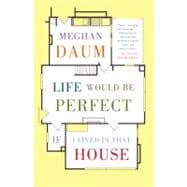
What is included with this book?
Meghan Daum is the author of the essay collection My Misspent Youth and the novel The Quality of Life Report, a New York Times Notable Book. Her column on political, cultural, and social affairs appears weekly in the Los Angeles Times and is distributed nationally through the McClatchy news service. She has contributed to public radio’s Morning Edition, Marketplace, and This American Life, and has written for numerous publications, including The New Yorker, Harper’s Magazine, GQ, Vogue, Harper’s Bazaar, and The New York Times Book Review. She lives in Los Angeles.
Visit the author's official website: www.meghandaum.com
The New copy of this book will include any supplemental materials advertised. Please check the title of the book to determine if it should include any access cards, study guides, lab manuals, CDs, etc.
The Used, Rental and eBook copies of this book are not guaranteed to include any supplemental materials. Typically, only the book itself is included. This is true even if the title states it includes any access cards, study guides, lab manuals, CDs, etc.